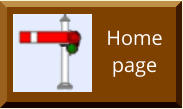The Box Working Life
Princes Risborough North Signal Box
The
lever
frame
installed
was
the
GWR
standard
of
the
time,
a
“double
twist”
frame,
so
called
because
it
describes
the
action
of
the
interlocking
components.
It
was
sized
for
126
levers,
which
determined
the
size
of
the
building.
97
were
actually
fitted,
though
there
may
have
been
alterations
over
the
years.
There
would
have
been
very
little
electrical
equipment:
probably
just
the
bell
telegraph
to
adjacent
signal
boxes
and
some
indicators
for
signals
too
far
away
for
the
signalman
to
see.
They
would
have
depended on batteries for their operation.
Mains
electricity
was
not
common,
and
wasn't
provided
to
the
North
box.
It
would
have
been
lit
by
oil
lamps,
and
probably
did
not
have
mains
water.
There
were
water
butts
at
each
corner
collecting
rainwater
from
the
roof,
which
would
have
been
used
for
cleaning
and
perhaps
topping
up
batteries.
Drinking
water
would
have
been
carried
from
the
station,
which
had
a
borehole.
The
loo
was
a
“thunderbox”
style
earth
closet,
housed
behind
one
of
the
outside
doors
by
the
staircase
at
ground
level.
Heating
was
of
course
by
coal,
using
two
fireplaces.
Different
types
of
stoves
have
been
fitted
over
the
years,
but
the
box
was
reputedly
always difficult to keep warm.
At
some
stage
a
gas
supply
was
provided
and
gas
lighting
installed.
The
original
installation,
with
a
few
alterations,
lasted
over
50
years.
In
1958,
now
nationalised
under
British
Railways,
the
box
got
a
thorough
refit
and
a
new
lever
frame,
125
levers
in
size.
This
was
of
the
state-of-the-art
“5-bar
vertical
tappet”
design,
and
because
its
levers
were
closer
together
it
was
shorter
than
its
predecessor.
Much
greater
use
would
by
then
have
been
made
of
electrical
equipment
for
track
circuits
and
other
signalling
equipment.
It
is
likely
that mains power would have been provided by then along with the luxury of electric lighting.
Other
changes
were
made.
We
don't
know
exactly
when,
some
may
have
happened
at
the
time
of
the
'58
refit,
some
earlier:
a
flush
toilet
was
provided
in
a
new
booth
on
the
operating
floor;
the
staircase
was
replaced
(probably
due
to
condition);
running
water
was
provided;
floor
standing
staff
instruments
for
the
single lines were replaced by Tyers key token instruments on cupboards.
Unfortunately
the
new
installation
was
not
to
perform
in
its
1958
form
for
long.
In
1967
the
route
was
downgraded
and
express
services
from
Paddington
to
Birmingham
and
beyond
ceased.
In
1968
the
line
from
Princes
Risborough
to
Aynho
was
singled,
with
just
a
two
hourly
DMU
service
running
through.
Many
other signal boxes on the line were closed progressively.
The
track
layout
at
Princes
Risborough
was
simplified,
and
the
Down
platform
was
closed
and
its
buildings
demolished.
All
trains
used
the
Up
platform
or
the
Aylesbury
bay.
Eventually
the
footbridge
was
demolished,
and
the
Down
platform
site
became
a
ballast
storage
area.
Signals
added
for
the
layout
changes
were
colour
lights,
worked
from
circuit
controllers
(switches)
on
the
levers.
Inside
the
box,
the
lever
frame
was
shortened
to
70
levers,
and
the
operating
floor
was
partitioned.
The
signalling
was
now
worked
from
the
north
end,
the
south
serving
as
an
office
and
later
a
crew
mess
room.
The
control
panel
seen
on
the
left
of
the
picture
was
added
to
remotely
work
the
crossing
loop
at
Bicester,
when the local signal box there closed.
Around
this
time,
a
ladder
appeared
on
the
north
end
of
the
box
to
serve
as
a
fire
exit
for
any
signalman
faced
with
the
choice
of
scorching
or
leaving
via
the
window.
The
coal
stoves
were
still
in
place,
but
some
electric heaters were installed too.
There
were
minor
changes
and
additions
subsequently,
as
is
common,
and
there
was
building
refurbishment
(a
repaint)
around
1976
but
things
stayed
much
the
same
until
the
“Route
Modernisation”
of
the
1980's
came
along.
Despite
starting
the
decade
with
proposals
to
close
the
line
north
of
Risborough,
to
shut
Marylebone
and
to
route
any
vestigial
passenger
traffic
into
Paddington,
the
line
was
progressively
upgraded.
All
semaphore
signalling
was
replaced
with
modern
colour
lights
working
from
Solid
State
Interlocking
and
an
Integrated
Electronic
Control
Centre
at
Marylebone.
February
1991
saw
the
last
train
signalled
from
Princes
Risborough
North
box,
and
the
redundancy
of
its
last
resident
signalmen.
The
era
of
mechanical signal boxes was drawing to a close.















